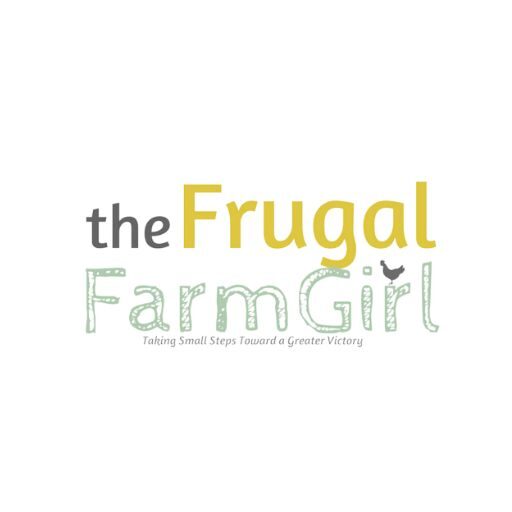Embarking on an adventure to adopt an urban homesteading lifestyle is one that can seem daunting but delivers many rewards for you and your family. This is not an overnight process, but one that you’ll be on for months and years.
The key is knowing where to start once you have scouted the suitable land and built your urban homestead shelter. Moving onto the land, or at least visiting it as you become accustomed to the lifestyle, is a step that allows you to see what this lifestyle entails.
For tips on how to find cheap land read this.

During your homesteading journey, you want to practice situations that allow you to survive both on and off the grid, save money on expenses, be self-sustainable with your food and resources, and gain knowledge about tasks you’re used to relying on others to complete.
By knowing which projects to start with, you’ll fast-track your ability not to rely on a supply chain or other professionals to rescue you from dire situations.
Below, you’ll find six projects you’ll want to start with as a new urban homesteader, and these will give you a good grasp on what it takes to live this way and what you need to learn more about.

Water Collection and Usage Plans for Your Property
Living on a new homestead is exciting, but ensuring a good water source is a top priority! Ideally, you will have natural water on your land, but don’t fret if you don’t!
If you have access to a spring, river, lake, or pond, you’re in luck, and you can collect water as needed. Just be sure it’s not drying up!
Alternatively, consider drilling a well on your property if groundwater is nearby. Get your water game strong, and you’ll be ready to tackle anything!
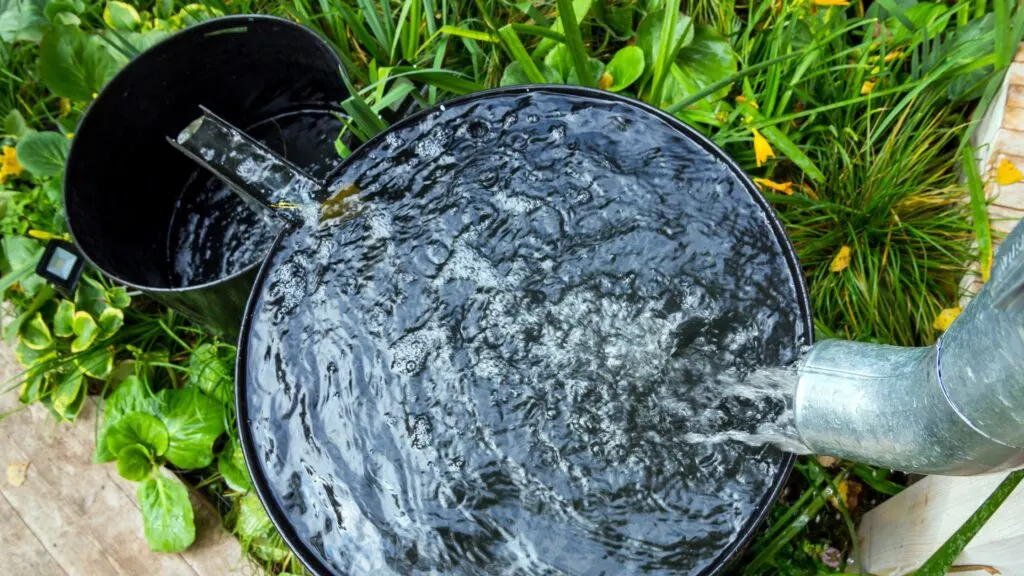
You want to set up a method to collect rainwater so you can use it whenever you need it. Harvesting rainwater requires you to have a storage tank and a method of collecting and funneling the water into it, such as runoff from your roof.
Some people also like to have a greywater system for sustainable living.
With grey water, you’re recycling the water used in your home from things like laundry, dishes, baths, etc., and using them to flush the toilet or water plants on your property, assuming the ingredients used in the dish soap or detergent are safe for that purpose.
Once you’ve figured out your collection method, the next step is: figuring out how to use that water on your backyard homestead. First, you and your family need safe drinking water to keep you healthy and hydrated.
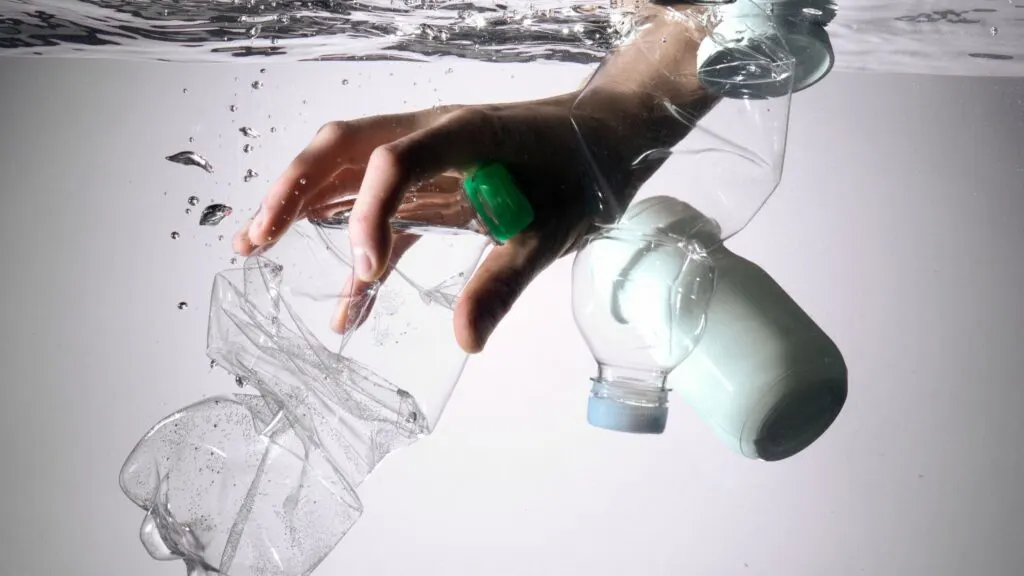
That’s the top priority! And if you are raising animals, they will need fresh water too. Whether they’re sipping from a trough or slurping from a watering system, make sure it’s clean and potable.
Your farm animals will be one happy herd (or flock or gaggle) thanks to your efforts!
Many self-sufficiency homesteaders prefer water treatment systems to purify their collected water for cooking and drinking. Additionally, it’s important to have an irrigation system for your garden.
You should also establish a suitable plumbing system that enables you to use water for household chores such as dishwashing, laundry, flushing toilets, bathing, and cleaning.
Besides these standard usage methods, it’s crucial to plan for emergencies, which homesteaders often disregard.
You might have a fire on your homestead or a drought – and you need large stocks of water that can be used to address these and keep your home, property, and family safe from a worse disaster.
Getting started with setting up these survival systems is a crucial step toward ensuring your basic needs are covered. But there are some problem areas you might run into along the way.
You might discover that your location doesn’t get enough water naturally, so you need to consider how you can conserve the water you’re using and invest in a larger storage tank you can fill in other ways.
It is essential to monitor your storage containers as they can become compromised due to extreme heat or cold weather, leading to cracks and leaks. To prevent contamination or loss of water, it is necessary to address any issues.
Backyard chickens and other livestock can contaminate the water source with manure. Therefore, it is essential to closely monitor the situation and make sure that your livestock stays hydrated without allowing for any bacterial contamination of the water source.
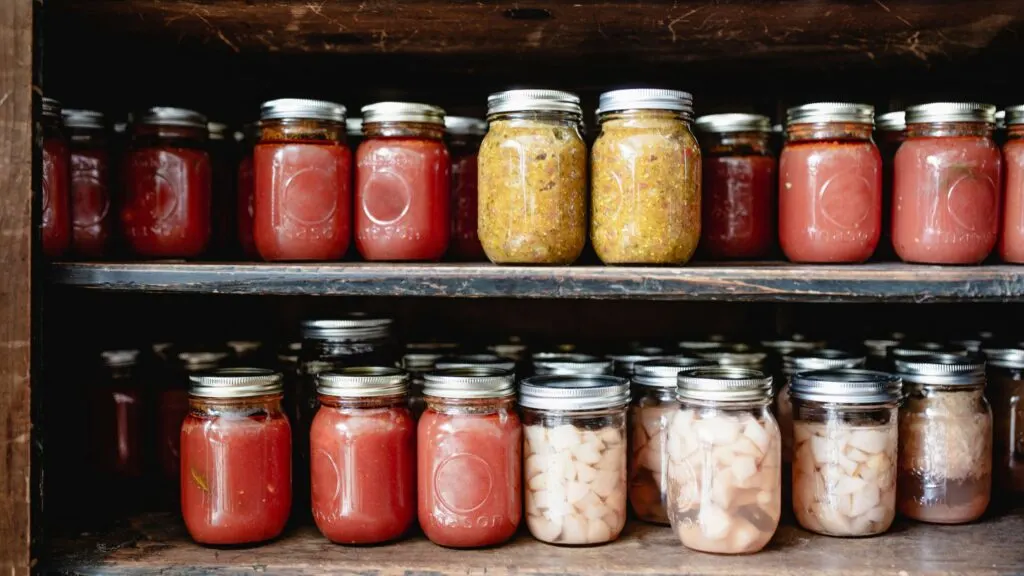
Grow Your Own Food and Storage Set Up
Food becomes the next priority for urban homesteaders after securing shelter and water. When homesteading, planning for growing food and storing the harvest is essential.
To start the project, you need to determine your growing zone. Use the USDA plant hardiness zone map to find out your zone. This information will help you choose the appropriate plants that will thrive in your area and when to plant them.
Don’t have a ton of space to start your vegetable garden? Try container gardening.
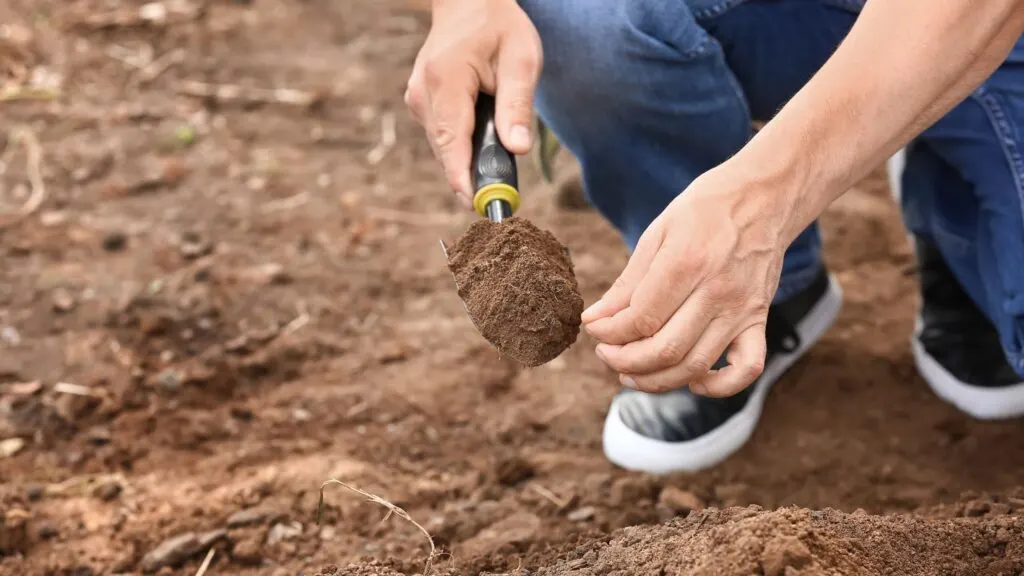
For this project, the next step is to analyze your soil. This will provide information about the pH levels and any nutrient deficiencies. You have two options: buy a kit to test it yourself or have a professional analyze and advise you on improving the soil’s growing conditions.
You’re going to want to take time to map the layout of your garden. Make sure you are considering how much space each full-grown plant will need, how you will pair them up for companion planting, how much sunlight each one needs, etc.
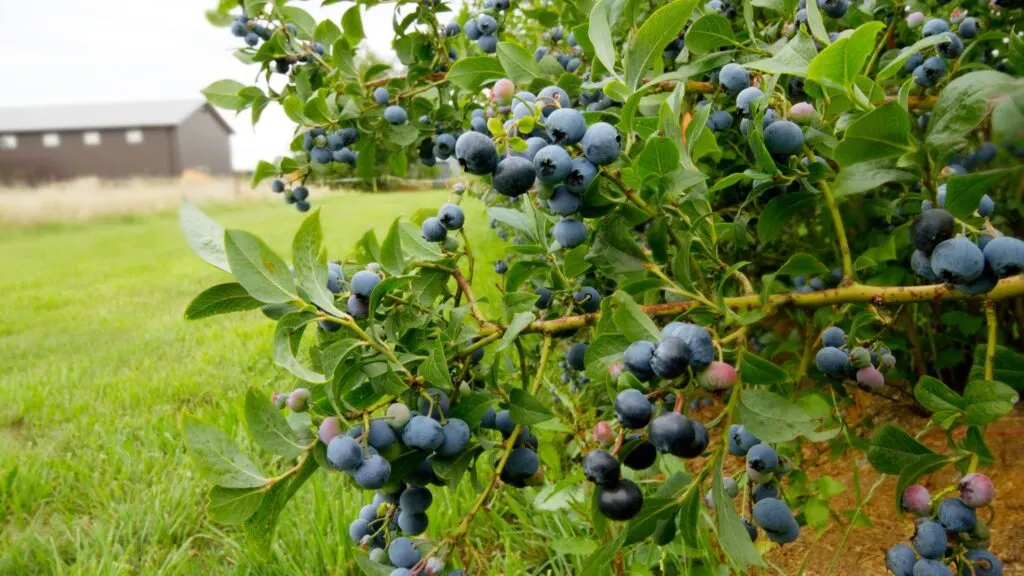
Consider an area for planting berry bushes and fruit trees on your property. Choosing a spot around the edges or where there is sufficient sunlight and access to watering is recommended.
At the end of summer, I find the best deal on fruit trees at our local home improvement stores.
The next part of your project will be setting up your irrigation system so that your vegetation stays hydrated properly. You may want to install the pipes or hoses before you go through the planting process.
You want to gather the products you will be using in the care of your plants, including any type of fertilizer, mulch, and other products you’ll be using.
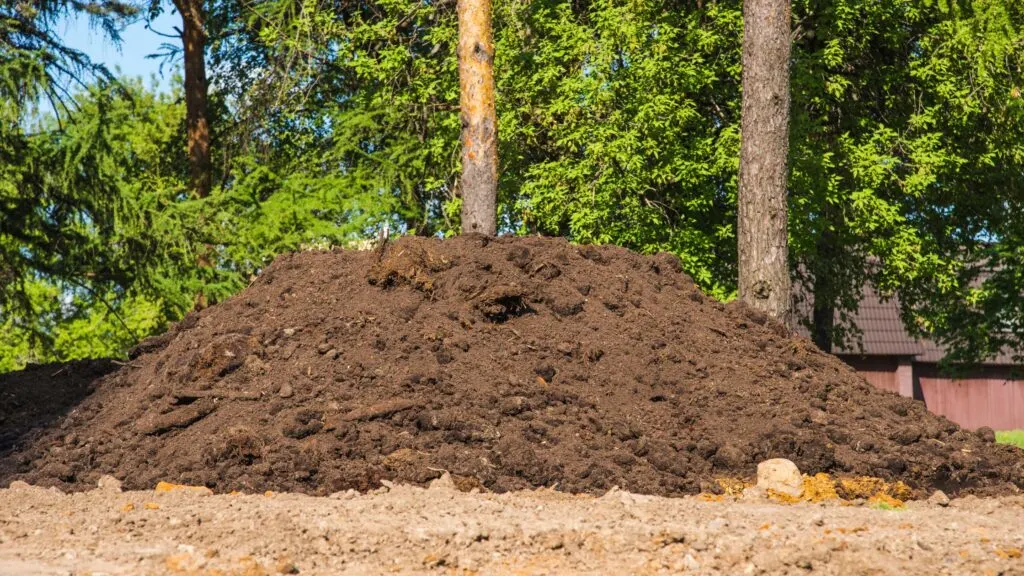
If you want to start a compost pile to help enrich the soil, now is the time to do that. I shared an article here on how to get started with composting.
If you have enough space you can just start a pile out in the open, but if you are short on space you can use a compost tumbler.

To ensure a steady supply of fresh produce, it’s essential to plan your harvest schedule for the entire year, including crops that can thrive in cold and warm weather. Before buying seeds or seedlings, consider which fruits and vegetables can be harvested during different seasons.
If you are starting a backyard homestead and want to grow your own food in a small outdoor space, consider raised garden beds. To save money, gather supplies around your homestead to create unique and affordable raised beds.
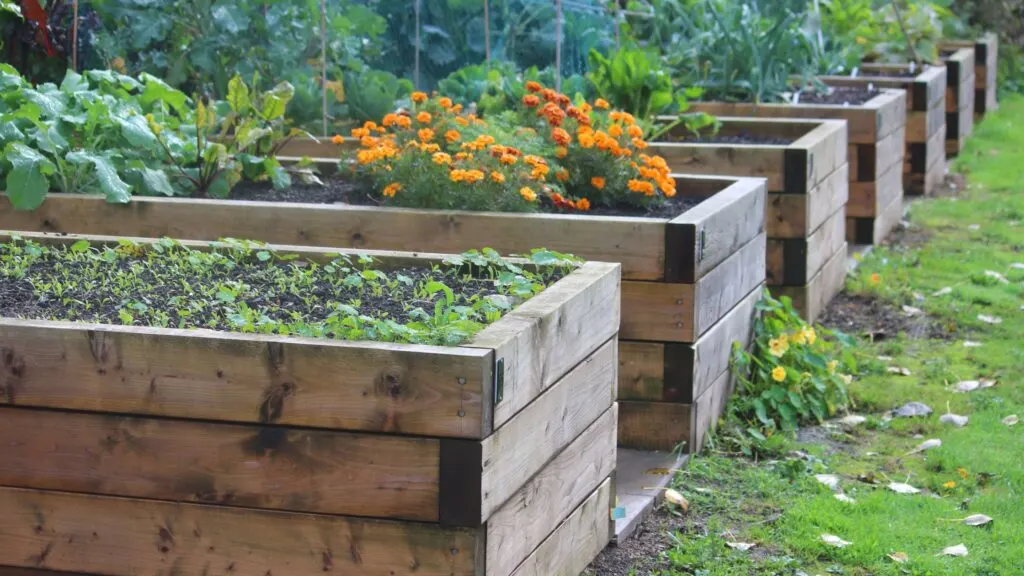
My cousin this year is growing food in small kids’ pools. The pools were $7 each. Once you start having enough of your own compost, you will save on soil costs.
It’s important to consider crop rotations and soil health for each new crop you plant. Planning should consider factors such as weather conditions and when to expect the most rain or sun.
When you start urban homesteading, you want to be growing the food that will yield the most in terms of volume of the harvest and based on the nutrients it will provide for your family.
Growing potatoes is an excellent choice to preserve food as they are beginner-friendly and have a long shelf life. They are also packed with nutrients such as potassium and vitamin C, making them a great source of carbs.
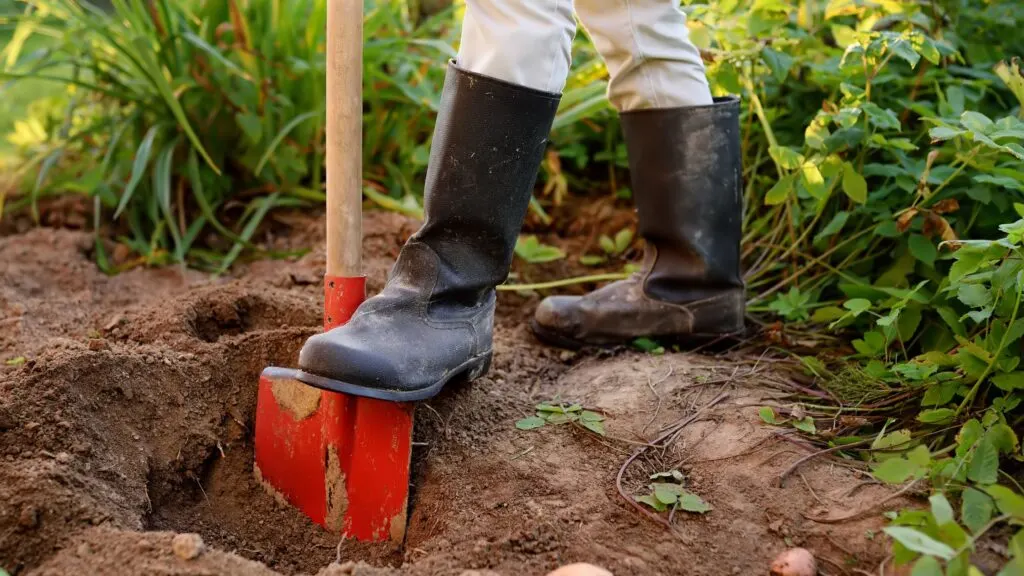
Consider adding carrots, turnips, parsnips, beets, onions, and radishes to your homestead garden. These root vegetables are easy to grow and can be stored in your root cellar or storage bins.
Growing and harvesting beans can be beneficial for survival. They can be stored long-term and provide protein, carbohydrates, and fiber.
You may want to add peas to your homestead garden. They are a hassle-free crop rich in vitamins A and C and can be stored easily. Additionally, they can be used in many different ways.
If you live in a dry area, it may not be ideal to plant certain vegetables like squash which require regular watering. However, if you reside in an area with ample water resources, growing squash can be beneficial for various purposes.
It is recommended to grow a variety of green vegetables in your vegetable garden. Lettuce and spinach are good options as they are relatively easy to cultivate.
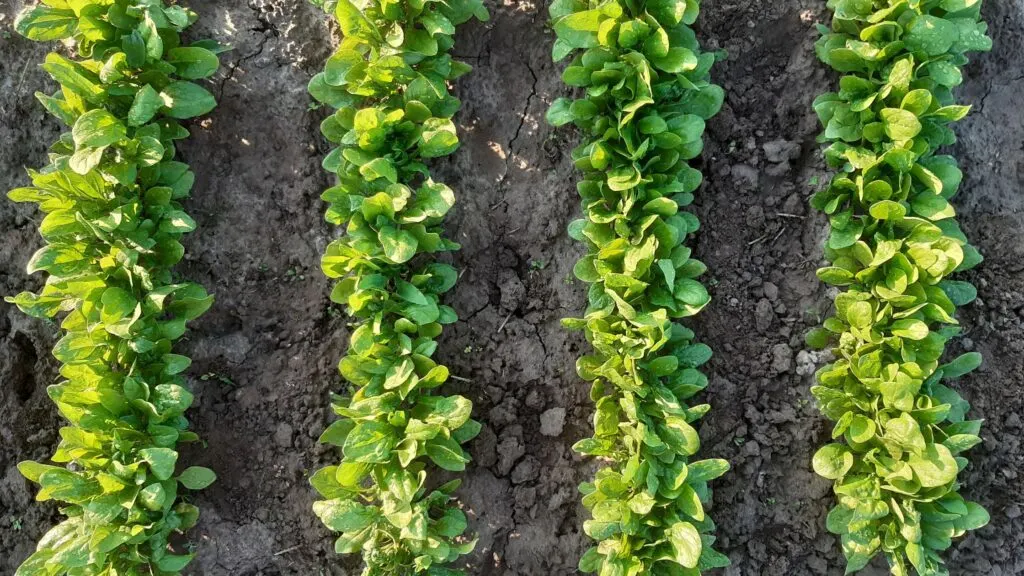
It’s a good idea to consider growing vegetables such as kale, collard greens, and mustard, as well as herbs. Not only will they add flavor to your meals, and some have medicinal properties, but they can also be easily dried and stored.
Growing tomatoes is an excellent choice for survival because they are low-maintenance and versatile. Additionally, they can be preserved through canning or dehydration and incorporated into a variety of dishes.
Check out this article if you’re interested in discovering some inexpensive and impressive methods to stake your tomatoes.
One way to add vitamins and antioxidants to your diet is by planting berry bushes around your property, like blueberries, blackberries, strawberries, and raspberries.
These berries can be eaten straight from the plant or used to make tasty jams and jellies that enhance the flavor of your baked goods.
Berries are one of my favorite things to freeze and preserve.

Consider planting fruit trees on your property. It’s recommended to have a combination of stone and citrus fruits such as oranges, lemons, peaches, and apricots. These trees can provide a consistent supply of fresh produce for your family for many years.
Begin your learning process to understand the appropriate planting season, watering and nutrient requirements for your plants, proper harvesting time, and post-harvest procedures for your property.
To effectively harvest your garden, it’s important to decide which produce you’ll consume right away and which ones you’ll store on your property. Additionally, it’s vital to educate yourself on various food preservation techniques.
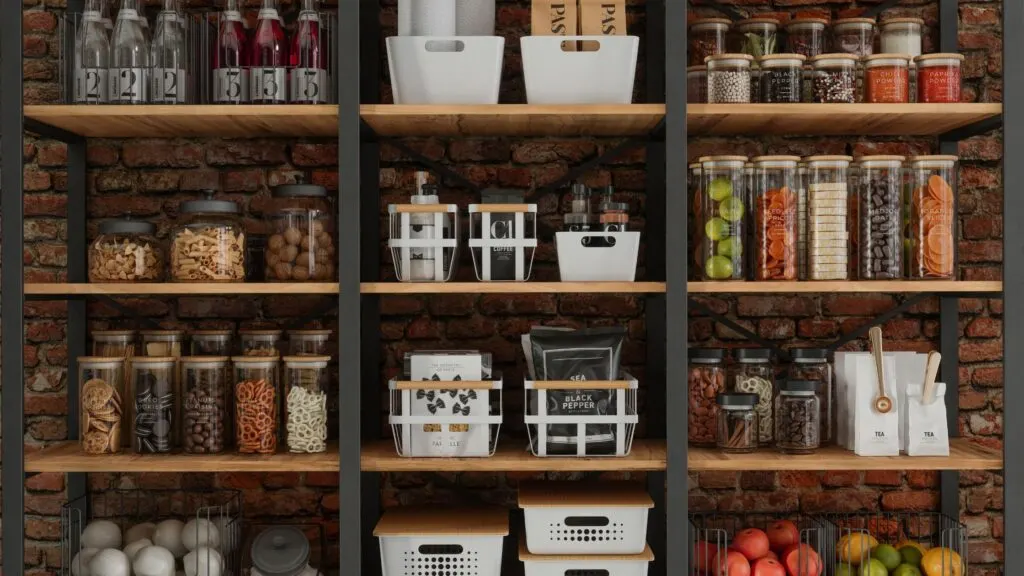
Two important methods to consider to preserve food are canning and dehydrating. Whether or not freezing is an option for your harvested crops depends on whether you have a power source on your property.
You can use a dehydrating machine or air-dry food in the sunlight to dry food. Make sure to store it properly in an airtight container to prevent spoilage.
Learning how to use fermentation is a good idea if you want to preserve certain foods. You can make pickles from cucumbers or create gut-healthy foods like kimchi and sauerkraut.
Over time, you may encounter several issues that can prevent you from growing or churning out a decent harvest. One thing you always want to do is consistently check the fertility of the soil so that if any of the nutrients are getting depleted, you can rotate crops appropriately or add some of your compost pile to help enrich the soil.
Some people ignore harvesting guidelines and try to guess when to harvest food. You want to ensure that you are maximizing the yield of your garden by learning when your crops are ready for harvest based on guidelines and visual cues.
Another common issue gardeners face is plant diseases, such as mildew, which can harm plants. Pests can also damage crops, including insects and rodents that may eat away at the vegetation.
You may also experience some sort of weather-related event that causes problems for your crops. Whether it’s a lack of rainwater or a flood, cold or hot temperatures, you want to plan for these situations early on.
It’s important to remember that you might not be able to buy seeds whenever you need to plant new crops. That’s why it’s helpful to know how to save your own seeds from your harvest and store and label them carefully.
Check to see if your local area has a seed library. We have one at our local library, and you can get seeds for free and bring in your own seeds for others.
This way, you won’t have to depend on buying seeds from other sources in the future.

Homestead Cooking and Chores
Living on a homestead requires a different approach to cooking and cleaning compared to suburban living, where there is easy access to electricity and store-bought cleaning and cooking supplies.
In addition to scratch cooking, which we’ll discuss in a little more detail momentarily, you have to know how to clean your home using more natural products.
You can make your own cleaning products, such as window cleaners, encounter cleaners, or wood polishing.
You may have multiple items that require different cleaning methods. If you are using a wood oven, it will need a more manual approach than an electric oven that can self-clean with the push of a button.
You’ll need to know a few different methods to complete your chores without these conveniences. For example, instead of just loading up a washing machine or dryer, you may wash clothes by hand and then line-drying them outside in the sun.
Your waste management system may differ slightly when you are on a homestead. You may do more composting and recycling than you have before.
You will also need to know how to do your own home repairs and maintenance because, in a survival situation, you may not be able to call a professional.
Some people change their entire lifestyle, which includes cooking without modern conveniences. If you use this method, you’ll need to know how to cook over an open fire or use your wood stove or even solar cookers to prepare your meals.
Try using a cast iron Dutch oven to cook over an open fire. It’s versatile, allowing you to cook meats, bread, and more. Becoming skilled with it might be worthwhile.
Not only do you need to know the methods to cook with, but you’ll want to start practicing some homemade items that you may not eventually have access to on store shelves.
Making your own bread is a simple process. However, you need to learn it from the beginning by using flour, yeast, salt, and water. Alternatively, you can attempt to create other baked treats such as cookies, cakes, or muffins.
Check out my favorite bread recipe here- you do not have to use a bread machine for it.
You need to decide if you want to make homemade butter, cheese, yogurt, sauces, and other versatile ingredients for your meals.
Make a list of some of your family’s favorite foods, and then think about how you would prepare them if you did not have the ability to run to the local grocery store and pick up all of the ingredients. ( INSERT Family Favoirtes sheet in my meal planning binder)

Necessary Crafts to Support Your Homestead
The next project you want to begin for your homestead is learning some crafts that will support you in your new way of life. You can start with any of these valuable skills and master one before moving on to the other.
One suggestion is to learn woodworking and carpentry, which will enable you to construct buildings like a shed or chicken coop. Additionally, you can utilize these skills to craft items for your home, like a bed, bookshelf, or bench.
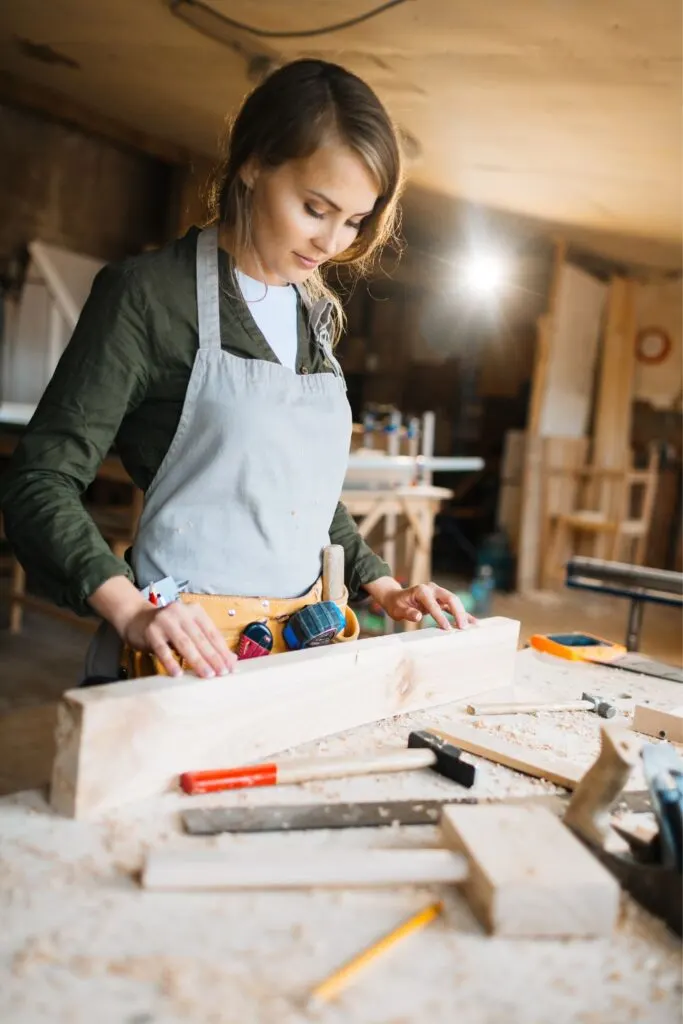
Not only will it allow you to create these items from scratch, but you’ll also learn how to repair them if any of them are damaged or old. You may want to start with something simple, like a workbench that you can create out of lumber, plywood, wood glue, and screws.
To complete these projects, you must acquire homesteading skills in measuring, cutting, sanding, and drilling. Although there’s a learning curve, soon, you’ll be able to assemble the pieces easily and quickly.
You may consider purchasing or downloading project plans from the internet. After that, you can print and laminate them to keep them with you in an emergency.
It’s recommended to start with simple and manageable plans and gradually work your way up to more complex ones as you gain experience.
Sewing is another craft you’ll want to learn for your self-sufficient lifestyle. Not only can you make and repair clothing, but you can also assemble other household items, such as blankets, curtains, bags, etc.
If you have never learned to sew, you will need to teach yourself skills like measuring fabric, cutting and pinning it, and then stitching it together using a machine or by hand, in case you do not have electricity.
If you raise chickens, there are some really awesome ways to reuse your feed bags and turn them into bags to use or sell.

To prepare for your sewing projects, ensure you have gathered essential tools like measuring tape, scissors, fabric, and pins. It’s also helpful to buy or download patterns beforehand to have them ready for future use.
Just like learning to sew, you may also be interested in learning how to crochet or knit. With these skills, you can make clothing, blankets, dishcloths, and oven mitts, which may be a fun project.
Again, this is a traditional homesteading skill you can master by starting with small projects and moving on to larger ones as your skills improve. You can also find patterns for knitting and crocheting projects to keep on hand.
If you don’t plan on sewing your bags, consider learning basket weaving using natural materials like willows on your homestead. This skill can help you create baskets for harvesting produce from your garden or other areas.
Having the skill of pottery can be useful, and it is often passed down through families. It is especially beneficial if you reside in an area abundant with clay.
You can create items for your homestead, such as dishes, pots, and other things to use on your property. You may want to fashion together a kiln on your property, and you can start by designing small pots and leveling up to more complicated ones as your skills improve.

As a homesteader, it’s essential to learn how to make your own candles using either soy wax or beeswax. With some basic tools, you can melt the ingredients together, add a wick, and mold the candle to your preference. You can also add essential oils for fragrance or make unscented candles.
One skill homesteaders often acquire early on is to learn how to make their own soap using natural ingredients such as oil and lye and adding fragrances if desired. This soap can be used for washing the body, clothes, and other items.
Raising Animals & Backyard Chickens Starter Plans
Deciding whether to raise livestock on your homestead is a personal choice. Some may not be interested or have enough space, while others may want to incorporate livestock into their homesteading practices.
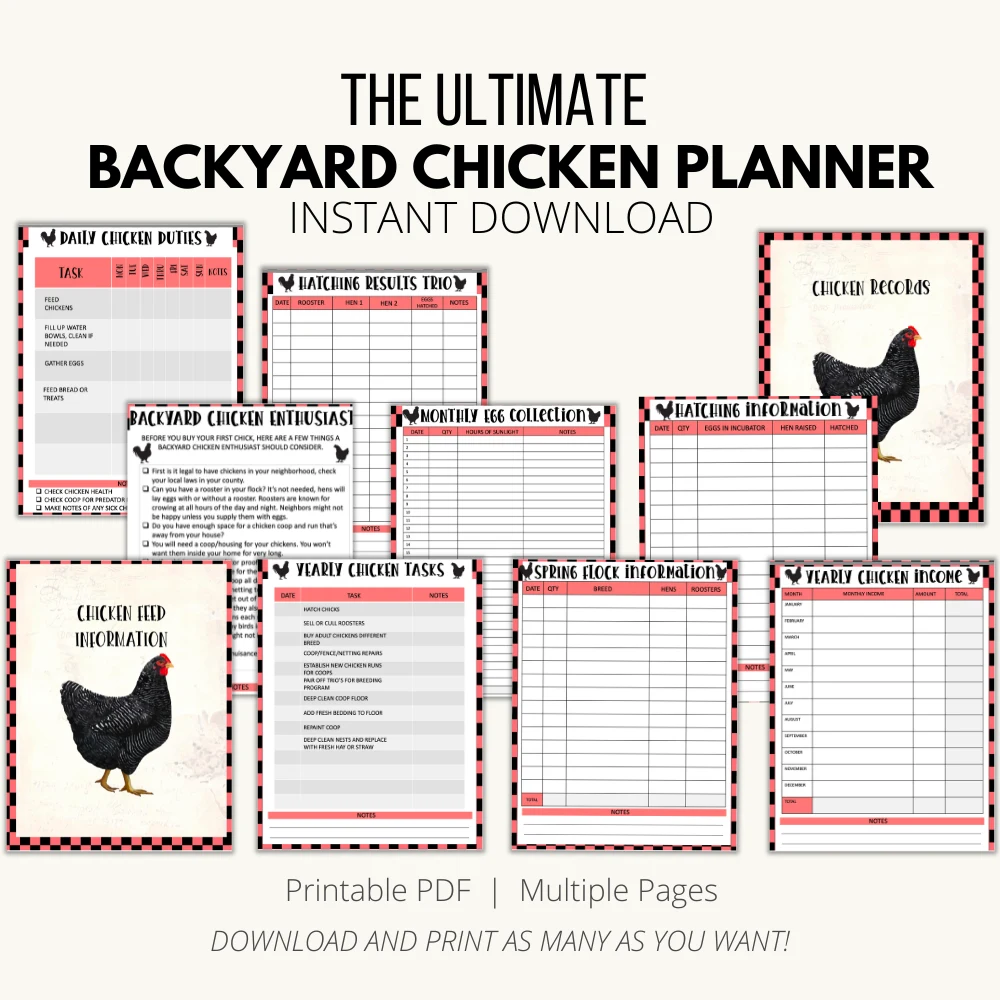
One of the easiest things to begin with is raising chickens. You get a steady supply of fresh eggs, and they can provide you with meat when and if you need the protein. For a list of the best animals to begin with, please refer to this article.
If you want to stay organized when starting with Livestock, grab my Livestock binder here.
You can use your new woodworking skills to build a coop with a run for your chickens. If this is your starter project, you’ll need to know how to properly care for them by cleaning their coop, collecting the eggs, and monitoring them for any health issues.
You can find ideas and tips for designing a chicken coop by clicking on this link.
Another popular choice for homesteaders is to raise rabbits. They provide meat, and you can also use the hide for fur. Like backyard chickens, you’ll need to have a rabbit hutch and learn how to clean their area, feed them and monitor them for any health issues.

For new homesteaders, goats, and sheep are popular choices for keeping livestock. Goats can provide milk, meat, and hides, while sheep can offer materials for making clothing and textiles on your homestead. Lambs are another excellent choice for meat.
We’ve really enjoyed raising lambs. They are smaller than cows, easier to manage, and the meat has been incredible.
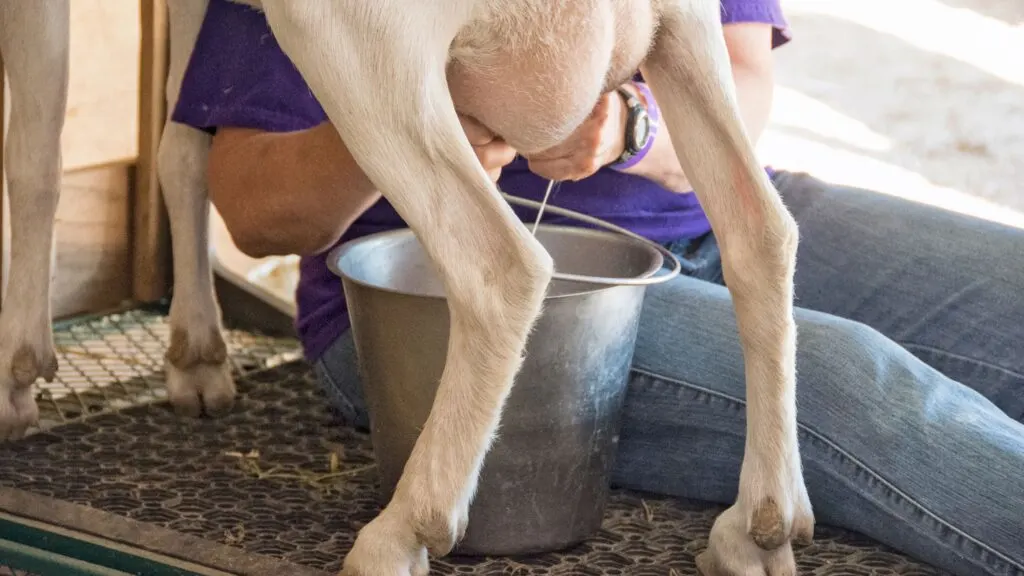
I’ve been milking our goats for two years now, and I really do enjoy it. You can check out a video I shared last year when I first started milking willow here.
If you have the space, you may want also to include cows on your property. They require much more care and feeding, so you have to understand these needs before undertaking a project of this size.
You might want to think about keeping bees in your property. Apart from harvesting honey, bees can also help pollinate your garden, improving your overall food production.
Start by figuring out how much space you want to dedicate to your livestock, and then consider what resources you have and still need to get to purchase and properly care for them.
Depending on where your homestead is located, you may also have to look into any regulations or zoning issues that could present your own unique challenges in owning certain types of animals.

Safety and Security for the Property and Inhabitants
And the last but not least important project that you want to begin on your new homestead is looking at safety and security for not only the people and livestock who are staying on the homestead but also the property on it.
To ensure safety during a survival situation, securing your home against potential intruders who might steal your survival supplies or harm your family is important. Begin by strengthening the protection of your shelter.
You want to make sure that all entry points are reinforced and secure. You may want to install some sort of security system or safe room, but remember that these methods may fail without electricity.
Part of your security project may include learning self-defense measures and ensuring that your family is well-versed. Those include hand-to-hand combat situations and the use of self-defense weaponry.
Remember to consider other safety measures you should take within your home, such as having fire extinguishers readily available in case of a fire, whether it originates from using a wood stove or any other situation.
Every family member should know first aid measures, including how to use your first aid kit and apply them to minor and significant situations. It is essential to gain knowledge about these tools and insights.
Next, you will want to go outside your homestead and initiate some sort of safety and security for any livestock you have on the property.
To safeguard your flock, you could consider options such as acquiring a donkey or a livestock dog and ensuring that their enclosure is equipped with adequate predator-proof fencing.
You want to protect your garden from wildlife, such as deer, rabbits, and other animals that could damage the vegetation intended for your family’s consumption.

Don’t Forget the Budget
The homesteading lifestyle is not something that you can jump into without planning. While it may be a dream to become self-sufficient, it is essential to remember that, realistically, living on a homestead means dedicating time and money to learning how to do things correctly and meeting your needs.
Creating a budget for this new lifestyle will help you determine how much money and resources you need to invest. It can also provide a plan for setting and working towards goals.
For example, when starting out, it is essential to factor in the cost of purchasing the land, materials for building your home or shelter, seeds for your vegetable garden, woodworking tools, gardening supplies, and basic homesteading necessities such as food-grade buckets, canning jars, and lids, mason jars for fermentation projects, etc.
You also need to consider the cost of any livestock you may purchase or keep on the property, such as chickens, ducks, rabbits, and goats—Additionally, factor in any potential vet costs that may incur if your animals become ill.
By creating a budget, you can plan for any potential expenses that may arise and be better prepared. Always look for used before buying new, and consider any bartering to save money.
Take advantage of Facebook groups and your local Buy Nothing project.
So don’t be overwhelmed; take each project individually and find creative ways to get the job done. As an urban homesteader, you can learn a lot from experienced homesteaders on how to make the most of your space without breaking your budget.
And don’t forget to have fun!
